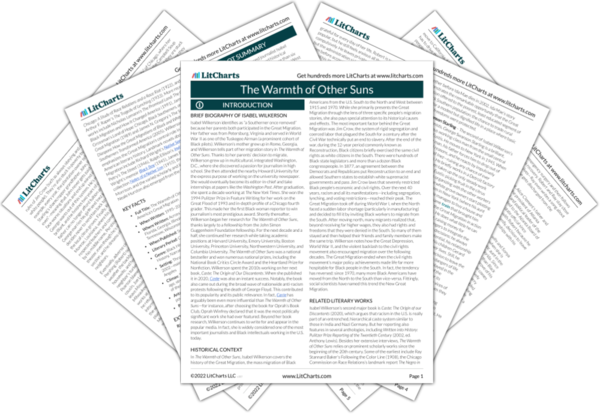In one sense, migration is unpredictable because it depends on millions of smaller decisions, which people make of their own free will. This is why the Great Migration continued after social scientists expected it to end. It’s also why Wilkerson views migration as both a
pathway to achieving freedom and a
basic expression of it. Yet, in another sense, migration is perfectly predictable—it’s easy to understand where people chose to migrate and why. They went where trains could take them, and where their family and friends had already gone. After all, the fact that people make free decisions to migrate doesn’t mean that there are no constraints on those decisions—to the contrary, migration was often their best option in an unfavorable situation.


